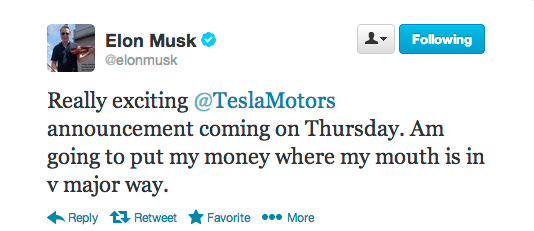June 17, 2013

The mobile ecosystem has grown by leaps and bounds over the past few years and with new technologies emerging, marketers are given endless opportunities to reach consumers in unique ways. However, now is the time to fully leverage the full power of the medium to stay ahead of competition.
According to industry experts, mobile has long-suffered from the “promise of mobile” being far ahead of actual consumer impact. However, in the last three to six months, it has become a detriment for a brand or retailer not to have a mobile strategy.
“I attribute this shift not to any mobile marketing technology development, but rather, to the mass adoption and use of smartphones," said Wilson Kerr, vice president of business development and sales at Unbound Commerce, Boston. "Sixty-plus percent of the U.S. population now owns one and prices are low enough to reduce all friction for ownership.
“As consumers get used to having these ‘always on mini-laptops,’ they are discovering the power of this new Internet access channel and, as such, are providing fuel for a vast array of mobile commerce and marketing initiatives,” he said.
Standing outAccording to Mr. Kerr, mobile marketing has been overhyped for so long that agencies and other key implementers have held off.
To stand out, linking mobile marketing with actionable mobile commerce is key.
Many times, marketers worry about consumer engagement, as well as social media “Likes” then they do about anything else.
While that is still important, marketers also need to measure mobile and look at data to better understand who it is they are reaching.
“Starbucks, EBay, Amazon, and Walmart are all generating huge mobile sales volume, but smaller retailers are now getting into the game,” Mr. Kerr said. “Shoe Carnival is a client of ours that has embraced omnichannel with mobile, tablet and now in-store kiosk commerce, all linked to a deep integration with their ATG ecommerce platform.
“By giving credit to local store managers for mobile sales linked to in-store triggers, they are turning mobile from a threat to an asset,” he said. “Watch for NFC to hit the scene in a big way.
“While Apple has resisted, Android has not and, as such, manufacturers like Samsung are eating Apple’s lunch. Globally, the Android operating system is crushing iOS by a whopping 70 percent to 21 percent."
Emerging technologies
With new technologies entering the space, including augmented reality and the much-anticipated Google Glass, marketers are seeing a lot of experimentation with more sophisticated forms of virtualization.
With new technologies entering the space, including augmented reality and the much-anticipated Google Glass, marketers are seeing a lot of experimentation with more sophisticated forms of virtualization.
“While this is going to remain ‘in the lab’ during 2013, it’s certainly on the mind of forward thinking marketers and an impending next phase in the opportunity bucket,” said Shuli Lowy, marketing director at Ping Mobile.
“In the remainder of 2013 we are likely to continue to see more creative forms of mobile ad units as well as smoother ad experiences,” she said. “Marketers are aiming to transform the mobile ad experience into a more appealing and seamless experience.
“Mobile Web sites are becoming more commonplace, mobile coupons are being sent directly to passbook, mobile videos are loading almost instantly and ads are being targeted more strategically. These little tweaks make a big difference in ad efficacy and are really transforming the penetration of mobile ads.”
According to Ms. Lowy, the mobile industry is beginning to see a lot of innovation with rich media ad units to create more intriguing and interactive ad experiences.
The executive also predicts that there will be a decrease in the growth of mobile apps.
“With more than a million apps on the market and the expense associated with building and running new apps, most marketers feel that the app market is leveling out,” Ms. Lowy said.
Game changers
Smartphones were by far the biggest game-changer in the mobile industry.
Smartphones were by far the biggest game-changer in the mobile industry.
Before smartphones, there was no mobile shopping, no mobile email and no social media.
Today, technology is changing the way users consume content.
Mobile devices have fundamentally shifted how consumers interact with brands but also more generally how people communicate with each other.
“Our very expectations of the engagement have risen as we’ve become conditioned to expect greater immediacy and feedback,” said Vanessa Horwell, chief visability officer at ThinkInk, Miami, FL.
“Customers, especially those who are loyalty program members, crave genuine engagement and experiences that go beyond shortsighted rewards and points,” said. “They don’t want email bombardment or push notifications that interrupt whatever they’re doing.
“When it comes to mobile messages and offers, ‘timely’ and ‘relevant’ are the watchwords of our time and marketers who take these lessons to heart will succeed.”
Mobile has given marketers an opportunity to engage people better than ever before and establish profound connections.
However, marketers who wish to stand out must appreciate that the mobile channel has different rules of engagement and requires a shift in mindset.
The truth is marketers are still having the same conversation they were having about mobile five years ago.
Message bombardment is not the solution and poorly planned mobile advertising is more akin to blindly throwing darts.
Staying ahead of the pack requires careful measuring and tracking of all forms of campaign outreach and consumer response to those engagements.
“I think the future lies in wearable smart technology,” Ms. Horwell said. “Whether it’s smart watches, immersive digital glasses and even the eventual embedding of mobile devices into our clothing, the very idea of what constitutes mobile marketing could be profoundly different in less than five years – and some of it could begin by the end of this year.”
Gradual shift
The most dramatic shift in the mobile space has been around omni-channel synchronization, per Steve Cole, chief marketing officer atGladson.
The most dramatic shift in the mobile space has been around omni-channel synchronization, per Steve Cole, chief marketing officer atGladson.
“What you see in the store, online and on mobile tends to be more synchronized than years ago,” Mr. Cole said. “While this is not necessarily a single break out technology, it has enormous benefits for consumers and spurred a number of new technologies aimed at synchronizing information across digital and brick-and-mortar channels.
“In-store pick up programs for online orders are an example,” he said. “Many retailers are introducing this service and its success is dependent on accurate, up-to-date inventory information across channels.
“Products listed online must be available in store, and inventory information needs to be localized and updated in a timely, accurate manner.”
The rise of mobile has put shoppers front and center.
Marketers must provide compelling, customer-centric experiences on every touch-point.
It should no longer matter who the biggest or best retailer is. It is about who has the most seamless and easy-to-use customer experience across channels.
Additionally, providing differentiated and accurate product content is important.
And, seamless integration of all of this content is critical.
What customers see online should be the same in store, on mobile and everywhere in between. To deliver this, marketers must not only understand the 360-degree view of their customers, but also provide a 360-degree view of their products through accurate, compelling content and information.
“Beyond integration across channels, we can expect to see a greater emphasis on describing products well across channels,” Mr. Cole said. “The focus so far has been mostly geared towards getting your products on every channel and utilizing new digital platforms.
“Product information needs to expand and be presented in the way customers want to learn about them,” he said. “Shoppers are looking for very specific information for each different product they are purchasing and the attributes customers want to know vary depending on the product, whether it’s diapers or socks.
“Moving forward, the focus will be on building out and curating all of this content in a way that is satisfying shoppers’ needs.”
Many marketers attribute apps to the popularity of smartphones.
Nowadays, however, marketers must not roll out an app solely to have one. An app needs to be fully thought out.
“The app must provide value. It must link with other apps,” said Chris Diener, senior vice president of analytics at AbsolutData.
“It needs to be social and it should be gamified,” he said. “So the first thing marketers need to do is develop and deploy custom, linked, value-providing apps.”
Final Take
Rimma Kats is associate editor on Mobile Marketer, New York
Rimma Kats is associate editor on Mobile Marketer, New York




